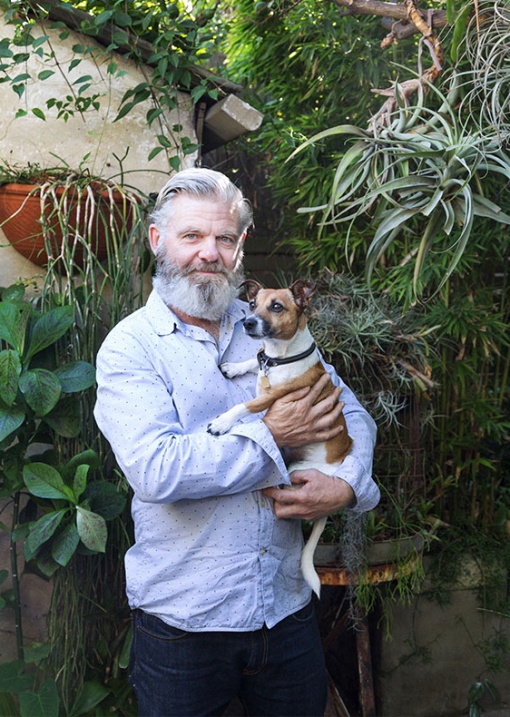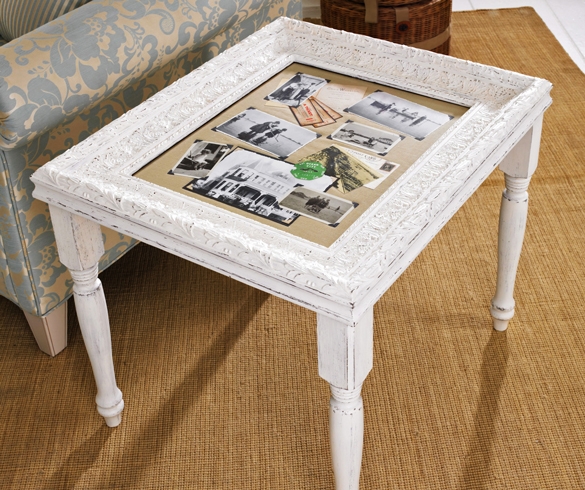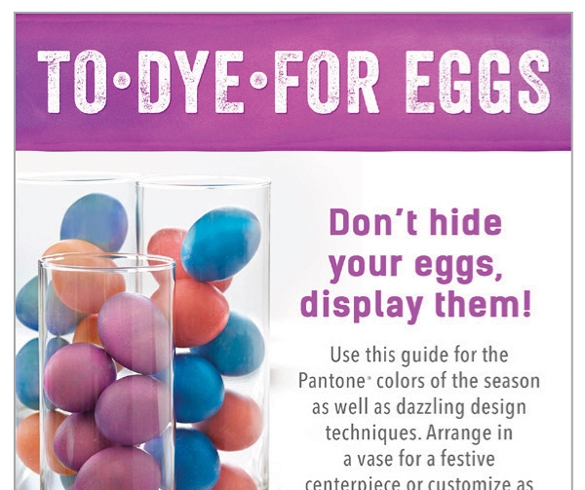I have a theory that inner city areas, with tiny houses, tiny gardens and lots of surrounding hard surfaces are the best places for jungle gardens (except for the Amazon, of course). Why? Well, because these spaces are often constrained in terms of size, sunlight and privacy, and so creative design solutions are required. The most creative garden design solutions, to me, involve going overboard with plants; and nothing says ‘overboard with plants’ like a jungle garden. They’re the perfect contrast to concrete inner city environments. Someone who has created my ultimate inner city jungle garden is Ian McMaugh of Budwise Garden Design, a garden designer who lives in Redfern, Sydney. Growing up on a farm in central west NSW, plants were something Ian had loved since childhood, but it wasn’t until looking for a career change after 20 years as a fashion designer that they became a professional pursuit. He says, ‘I remember being very interested in plants as a kid and entering the local show when I was 9.’
The section was called ‘Miniature Garden Planted in a Cake Tin.’ I won first prize. That was the beginning.’ As a designer, Ian’s style is loose and naturalistic. His own garden is a reflection of this but, he says, though it’s not as ‘designed’ as his clients’ gardens. ‘My clients have specific wants and needs, whereas my own garden is more of a collection of plants I like… I don’t like overly designed gardens. Personally, I feel more relaxed in a space that has evolved.’ Ian and his partner bought their property in 1996, after renting it for three years. When they moved in, both the front and back gardens were in bad shape. The back garden, which faces west, was avoided at all costs, due to the summer heat, bad paving, ugly aluminum shed and dilapidated corrugated iron fencing. Ian’s three main challenges in designing this garden were ugly sightlines, noise and security. Ian’s solution to these challenges was to plant, plant, and plant – on both the horizontal and vertical planes. He planted dense layers of green to absorb the noise, and to hide ugly views, and included extra spiky bromeliads on top of the boundary walls for security, referring to them as ‘botanical substitutes for razor wire’!
The orange tree in the centre of the space, whilst creating a lovely canopy, provides extra growing space for more plants! Most of the plants in the garden are epiphytes (plants that grow on other plants, like bromeliads, orchids, air plants etcerera), perfect for a sub-tropical urban jungle garden. Unlike many contemporary gardens these days, this space is purely about plants. The simple grey pavers throughout the space provide a great foil to the exuberance of the planting, and provide for practical seating areas and accessibility, but the greenery is where its at. Often design problems are solved with screens, walls, wood, stone and steel, which certainly have benefits (longevity and less maintenance than plants) but to me, this feels like a much softer and more appealing design solution. The effect of this garden is one of relief and retreat. While it feels very much related to the surrounding environment, there is a very important element of disconnect, of sanctuary. Not only does it feel wonderful to be in, this garden is an absolute treasure trove of amazing plants. It’s the size of a postage stamp but I reckon it would take me a good few hours of investigating to really see it all. It’s the work of both a passionate collector and a highly creative soul.
A true jungle gem.
Huge thanks to Georgina for sharing another stunning garden with us today, and toDaniel Shipp for his beautiful pics. Do keep up with Georgina’s other plant-inspired musings over at The Planthunter!

The Redfern courtyard garden of Ian McMaugh. A curtain of mistletoe cactus (Rhipsalis spp.) creates a sense of definition between the two zones in the courtyard garden. Photo – Daniel Shipp. Production – Lucy Feagins/The Design Files and Georgina Reid/The Planthunter.

The orange tree in the centre of the garden provides both fruit, sun protection, privacy and MORE space for growing plants! Photo – Daniel Shipp. Production – Lucy Feagins/The Design Files and Georgina Reid/The Planthunter.

A group of air plants (Tillandsia latifolia and T.lorenziana) hang off one of the orange tree’s branches. Photo – Daniel Shipp. Production – Lucy Feagins/The Design Files and Georgina Reid/The Planthunter.

Ian and his dog Jessie. Photo – Daniel Shipp. Production – Lucy Feagins/The Design Files and Georgina Reid/The Planthunter.

A rustic garden shed at the rear of the courtyard lends a sense of timelessness to the garden. The tall plant on the left is an African Milk Bush (Euphorbia grantii). A lantern flower (Ceropegia ampliata) hangs from a terracotta wall mounted pot, as does a hoya (Hoya carnosa) plant. Photo – Daniel Shipp. Production – Lucy Feagins/The Design Files and Georgina Reid/The Planthunter.

A vintage birdcage is used to house even more plants. Air plants (Tillandsia cocoensis) sit on top of the cage whilst Spanish moss (Tillandsia usneoides) hangs from the front. Inside is a collection of different bromeliads. Photo – Daniel Shipp. Production – Lucy Feagins/The Design Files and Georgina Reid/The Planthunter.

The orange tree provides the perfect home for a collection of bromeliads (the one with the pink centre is Neoregelia ‘Rosie Morn’) growing in its branches. Photo – Daniel Shipp. Production – Lucy Feagins/The Design Files and Georgina Reid/The Planthunter.

The bright lime green of Elephant ear (Xanthosoma aurea) provides a bold contrast to the smaller variegated green and white leaves of the nerve plant (Fittonia spp.) and the silver and red leaves of the friendship plant (Pilea involucrata). Photo – Daniel Shipp. Production – Lucy Feagins/The Design Files and Georgina Reid/The Planthunter.

Another air plant (Tillandsia bergeri) hangs from the orange tree. Photo – Daniel Shipp. Production – Lucy Feagins/The Design Files and Georgina Reid/The Planthunter.

Clumps of bromeliads and a huge Elkhorn (Platycerium bifurcatum) are mounted onto the boundary wall, providing a luscious backdrop to the garden. Photo – Daniel Shipp. Production – Lucy Feagins/The Design Files and Georgina Reid/The Planthunter.








